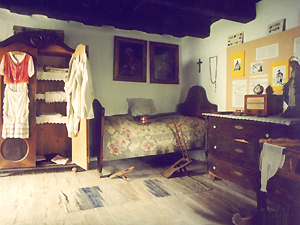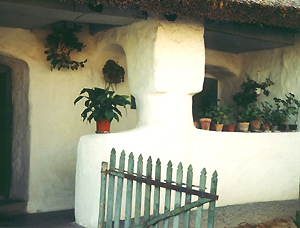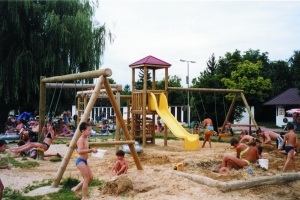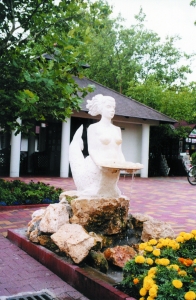Popular destinations nearby
Balatonfüred,
Hévíz,
Siófok,
Veszprém,
Zalakaros,
Badacsonytomaj,
Keszthely,
Tihany,
Fonyód,
Nagyvázsony,
Sümeg,
Szigliget,
Tapolca,
Zamárdi,
Zánka
|
Westward from Akali waters of the northern Nivegy valley and Káli hollow run down here. Both the site and the material of rock of the hills change at Zánka. Permian red-stone at the shore however 'Sharp Needle' (Hegyestű) in the north-west starts the line of volcanic basalt hills. Zánka is a traffic junction, roads to Tapolca and Nagyvázsony start from here. The territory of the village was populated by the first Magyar settlers of Hungary in the 11th century. Only a few inhabitants are mentioned in the first document dated 1164. The village was burned down by the Turkish in 1548 so it was depopulated. Aiming at retrieving the population, German colonists were settled down in Zánka in 1736. The landlord of largest domain was Esterházy family at that time. In the 19th century the population dealt primarily with viticulture and animal-breeding. At the eastern border of the village the largest children's camp was handed over in 1975 which is a summer resort currently, too. Its beach is ideal for families with small children for the water is quite shallow along with a certain part of the shore. Programmes of the summer camp are open, the disco of the shore and the covered movie are very popular among the youth.The cycle-path between the village and the holiday centre has recently been finished. The first part of the promenade on the shore was opened in 2002. It runs under the overpass in Vérkút street towards the bay. Greatest sight of Zánka is the church of Roman style built at the end of the 11th century. The ruined building was renovated by the Reformed in 1786, a tower was constructed at eastern side of the church at the end of the 19th century. The pulpit is kept by ancient columns. Country-house of the village is a cottar's house divided into three parts, built in 1736; it was the first completed building of the recolonization. Furniture and personal belongings of viniculturists, animal breeders, smiths, stone-cutters, reed cutters and fishermen living in the village are presented at the exhibition. Zánka is developing rapidly. The open-air bath and the Village House have been renewed. An old plan will come true when the 250 m long promenade along the lake shore has been built. The most important summer event of the settlement is the series of programmes called the Fishing Days of Zánka in July.High standard performances entertain the large public in the covered tent in front of the entrance of the beach while wine-growers offer their wines in the wine pavilions. During the Fishing Days besides the wide range of cultural programmes shooting contest competition of asphalt drawers, contest of cycling skills, angling contest at dawn are organized. Anglers' ball and contest of wines are outstanding events of Fishing Days. Facilities of riding and playing tennis in the village. Yellow route sign goes up to Sharp Needle from the railway station. Majority of the former basalt volcane is extracted, remained part of the top of the hill is one of the geological wonder of Balaton-Uplands. Looking up from the yard of the deserted mine, line of huge basalt columns like organ-pipes can be seen, and nice round-panorama from their top to the middle region of Balaton, the Káli hollow and the other monadnocks. Sharp Needle is a protected area of Balaton Uplands National Park and can also be reached by car. Lodgings in Zánka: More lodgings in Zánka Pictures of Zánka
|
Zánka map nagyítása >>
|
|
|
Hungary - Zánka |
|
|
|
||
|
Saturday, 19. July 2025. - 00:56:42 |
||



